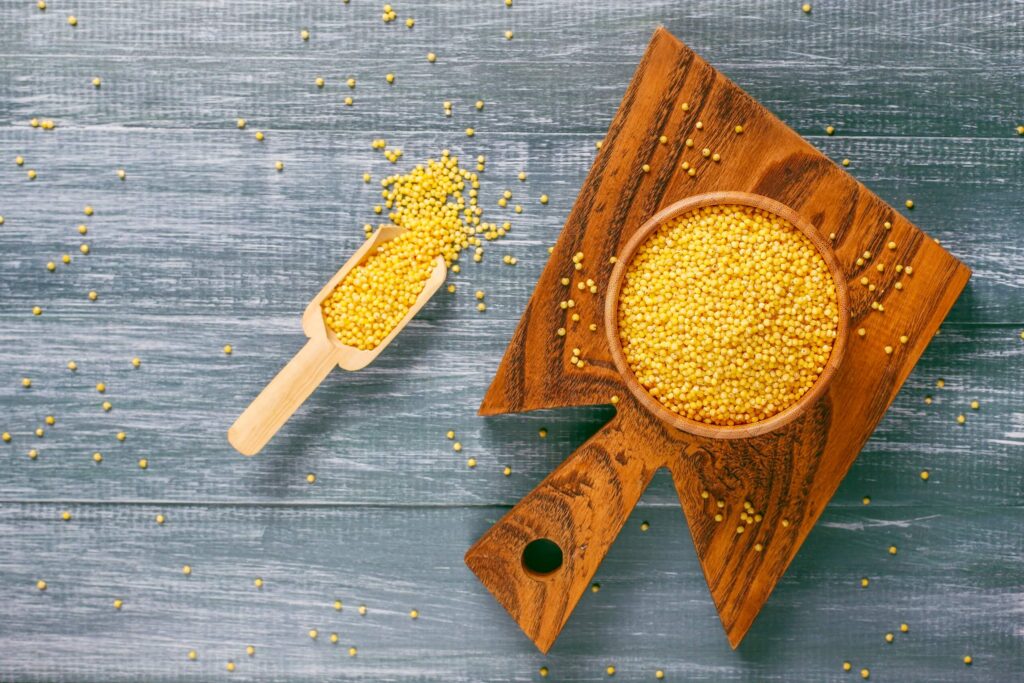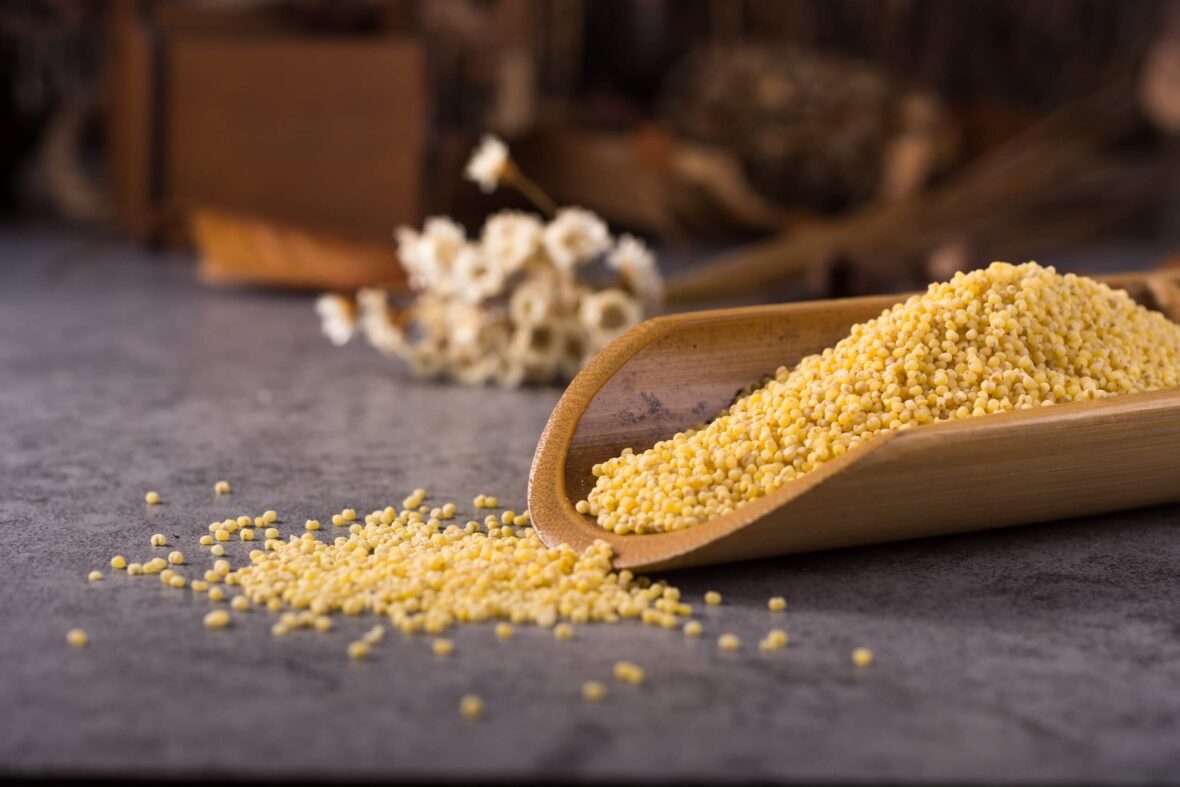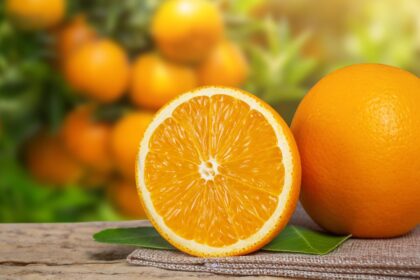If you’re looking for a low-maintenance, drought-resistant, and fast-growing grain, then you should go with millet. Because you should know “amazing health benefits of millet”. It’s been used to feed livestock for centuries, but more and more people are turning to it for its health benefits and cooking uses. It’s now the 6th most important cereal in the world. Moreover, it’s gluten-free, a great source of protein and fiber, and it’s got lots of other health benefits. It’s also drought-resistant, so you don’t have to worry about it drying out. Millet is available in various varieties including pearl, finger, and proso, as well as sorghum. Although these varieties may appear slightly different in appearance, they all offer similar health benefits.
This article reviews everything you need to know about millets, including their nutrients, benefits, potential drawbacks of millet, and its use in cooking.

What are the different types of millet?
Millets are a tiny, round grain that’s grown all over Asia and Africa. They have a lot of benefits compared to other crops, like being drought-resistant and resistant to pests. Plus, they can survive in tough conditions and less fertile land. These benefits come from their genetic makeup and structure – like their small size and hardiness. All millets come from the same family, the Poaceae, but they vary in color, shape, and species. There are more than 20 types of millet, but two main types of millet, big and small, and with big ones being the most popular.
- Large millets include proso, pearl, foxtail, finger (or ragi).
- Small millets include browntop, barnyard, Guinea, fonio.
What are nutritional facts of millet?
Millet contains a significant amount of potassium, a mineral essential for the proper functioning of the kidneys and heart. Potassium is also involved in the transmission of nerve signals, which are used by the brain and muscles to communicate with each other. Millets are packed with amino acids, which are essential for making proteins. Plus, they’re the most calcium-rich grain out of all grains, with 13% of Vitamin D per 100 grams cooked. Calcium is essential for keeping your bones healthy, your blood vessels and muscles strong, and your nerves functioning properly. Moreover, it’s also an excellent source of Niacin, Vitamin A & B, Phosphorus and Iron.
Nutrients per Serving – A quarter-cup serving of dry millet contains:
- Protein: 6 grams
- Fat: 2 grams
- Carbohydrates: 36 grams
- Fiber: 4 grams
Portion Sizes:
Millet is a type of cereal grain, and it is classified as a grass family food due to its resemblance to a seed. Its nutritional profile is comparable to sorghum, and it has a range of health benefits, such as aiding in the reduction of blood sugar levels and cholesterol. It is important to note that, like other grains, millet does not have a low calorie content. Therefore, it is recommended to consume it in moderation in order to maintain a healthy body weight. When cooked, millet expands when consumed, so it is important to be mindful of the amount consumed.
What are the possible health benefits of millet?
Millets are packed with nutrients and plant compounds, so they could have multiple health benefits, some of them are described as follows:
1. Rich in antioxidants
Millets are a source of phenolic compounds which are known to act as antioxidants in order to protect the body from oxidative stress. Some research on animals has proved that ferulic acid has a positive effect on wound healing and skin protection, along with providing anti-inflammatory benefits. All varieties of millet contain antioxidants, however, those with darker pigmentation have more of them than their lighter counterparts.
2. Manages blood sugar levels
Millets are fiber-rich grains that contain non-starch polysaccharides (NSP), two types of indigestible carbohydrates that help regulate blood sugar levels. Millets also have a low GI (glycemic index) which means they are unlikely to cause high blood sugar levels. This makes it an ideal food for people with diabetes, as it helps to reduce the risk of spikes in blood sugar levels after meals.
3. May support lower cholesterol
Millets are rich in soluble fiber which creates a viscous liquid in the gut. This aids trap fats and millet protein may also help lower cholesterol levels. Further, millet may considerably lower triglyceride level, besides a significant increase in the levels of adiponectins and good cholesterol. Adiponectin’s are anti-inflammatory hormones that support heart health and stimulate the oxidation of fatty acids. Their levels tend to be lower in people who are overweight and have type 2 diabetes.
4. A gluten-free diet
If you have Celiac disease or are gluten-sensitive, millets are a great option. They’re a grain that doesn’t contain any gluten, so you don’t have to worry about digestive issues like diarrhea or nutrient malnutrition. Just make sure you check the label when you buy them, though, to make sure they’re free of any ingredients that contain gluten.
5. Improve digestive health
Millet is a dietary source of soluble and insoluble dietary fiber. Insoluble fiber is referred to as a “prebiotic”. This type of fiber promotes the growth of beneficial bacteria in the digestive tract. Additionally, this type of fiber is essential for contributing bulk to stool, thereby promoting regularity and reducing the risk of colon cancer.
6. Protect your heart
The soluble fiber found in millet reduces the amount of “bad” cholesterol in the blood, which is a risk factor in atherosclerosis (heart disease). Soluble fiber converts into gel in the stomach, and absorbs cholesterol to safely remove it from the body. Some studies suggest that millet may also increase your “good” cholesterol levels and reduce triglycerides. Since cholesterol is a major risk factor in heart disease, regular consumption of millet may help maintain a healthy heart. Additionally, millet is packed with magnesium, which can help keep your heart in check.
7. Refining mood
Adding millet to your diet can really boost your mood. It’s high in one amino acid that can help reduce depression and anxiety. According to a study, eating a diet high in this amino acid can have a positive effect on your mood.
8. Managing obesity
Another study looked at the effects of millet on obesity and cholesterol. The results showed that this diet reduced body mass index (BMI) and can help reduce the occurrence of overweight and obesity, but more in-depth studies with larger samples are needed.
9. Reducing oxidative stress
Oxidative stress can lead to all sorts of health issues, like neurodegenerative diseases, arthritis, diabetes, and more. Eating too much fat can also make you more likely to get dementia because it makes your brain more sensitive to oxidative stress. Doctors think antioxidants are really important for reducing oxidative stress, which is a common cause of illness and getting older. Eating antioxidants could help you avoid chronic diseases.
10. Other potential health benefits of millets include:
- Maintaining bone health
- Suppressing cancer cell growth
- Promoting wound healing
- Supporting antifungal and antimicrobial activity

Potential downsides to health:
Millet is a food source that is rich in vital nutrients, however, it is also known to contain compounds known as antinutrient which can inhibit the absorption of nutrients by the body. The levels of these compounds may vary between different types of millet, with pearl millet containing phytates which decrease the absorption of nutrients, and finger millet containing tannins, inhibitors of protein synthesis, oxalates and phytate, among others. Few research has shown that the use of various processing methods can lead to a decrease in antinutrient levels:
- Milling
- Dehulling
- Fermenting
- Parboiling
- Blanching
- Germinating
How to use millet in cooking ?
If you want to get the most flavor out of your millet, just toast the seeds for 4-5 minutes until they’re golden brown. For quinoa, use a water-to-millet ratio of 2:1, and for porridge, 3:1. Stir often and season as needed. If you want a more creamy texture, add more liquid. Millet can be cooked in lots of different ways, from being soft and smooth like porridge, to being light and fluffy like rice, and there are lots of recipes and ways to cook with it.
The following are summaries of popular sweet and savory recipes for millet:
If you’re looking for a quick and easy way to make a millet meal, try making a tabouli or a pilaf. To make the tabouli, toast the grains until they’re a light golden brown, then mix them with diced tomatoes, cucumbers, onions, mints, oreganos, and herbs. Season to taste. To make the pilaf, add chopped carrots and onion, sea salt, and water and bring it to a boil. Cover and let it simmer for 30 minutes. For the pilaf, mix the millet with broth until it’s cooked through. If you want to make millet muffins, you can also mix it with flour and baking soda, then add eggs and milk. For the muffins, add butter and brown sugar.

How to Prepare Millet?
You can find millet in a variety of forms at your local supermarket or health food store. You can buy it dried, puffed, or ground. You can cook it like couscous, quinoa, or even add it to baked goods. You can also eat it as a snack or use it as a substitute for rice. Eating millet in any form is a great way to stay healthy. Plus, millets are sold as flour, and research shows that baking with flour increases their nutritional value by increasing the antioxidant content.
Here are some ideas for how to incorporate it into your diet:
- Make a pilaf with it instead of rice, bake millet bread with it, mix it into your next waffle,
- Add it to thanksgiving stuffing, snack on it instead of popcorn,
- Sprinkle it on your breakfast cereal, or cook it instead of couscous.
Conclusion:
People have been eating millet for thousands of years, because you should be aware surprising health benefits of millet. These days it’s becoming more popular because it grows quickly, is drought resistant, and requires minimal input. It’s packed with protein, fiber, vitamins, and minerals, and could have a range of health benefits, like protecting your heart, preventing diabetes, helping you stay healthy, and controlling inflammation in your gut. Plus, it’s gluten-free, so it’s a great option for those with celiac disease or a gluten-free lifestyle. It’s got a nutty flavor and versatility, so it’s definitely worth a try.
FAQ
Are millet grains gluten-free?
Yes, millet grains are naturally gluten-free. As a result, millet is an ideal choice for those who are celiac-free, gluten-sensitive, or have other dietary restrictions.
Is millet good for weight loss?
Yes, millet is a grain that is low in calories and high in nutrients. It is rich in complex carbohydrates and fiber, as well as vitamins and minerals, and can be beneficial in weight loss. The high fiber content of millet can help promote feelings of satiety and facilitate digestion, which may be beneficial for portion control and overall weight management in a balanced diet.
Reference Used:
https://www.medicalnewstoday.com/articles/what-is-millet#_noHeaderPrefixedContent





